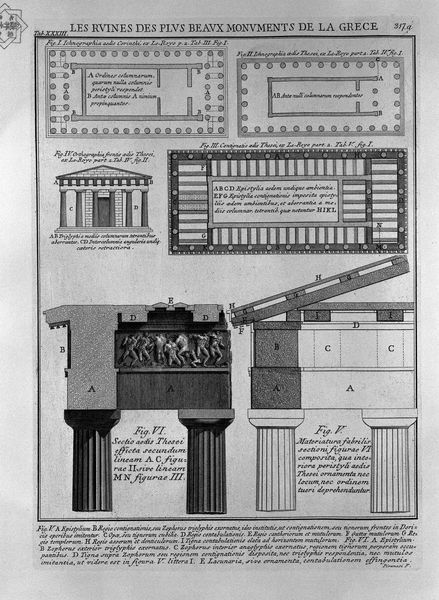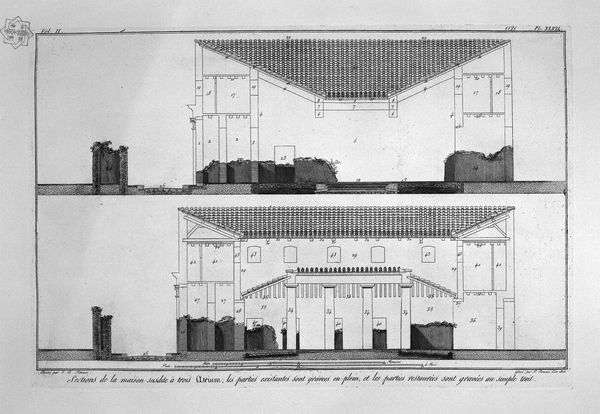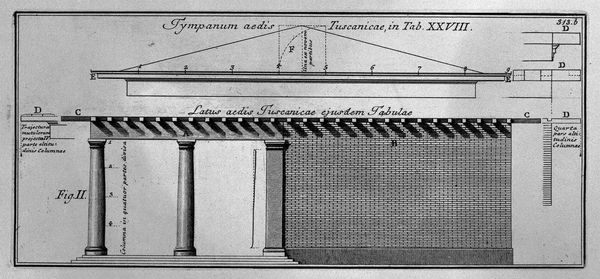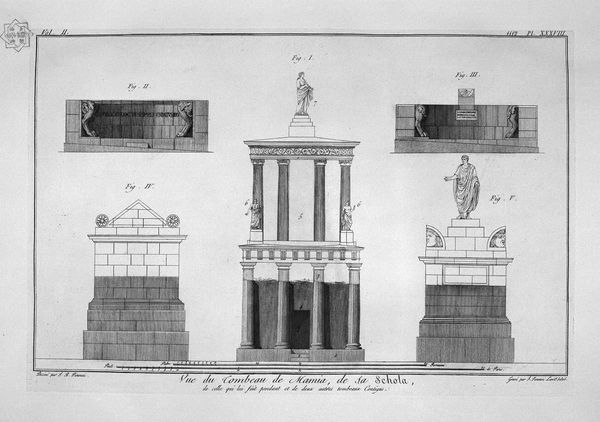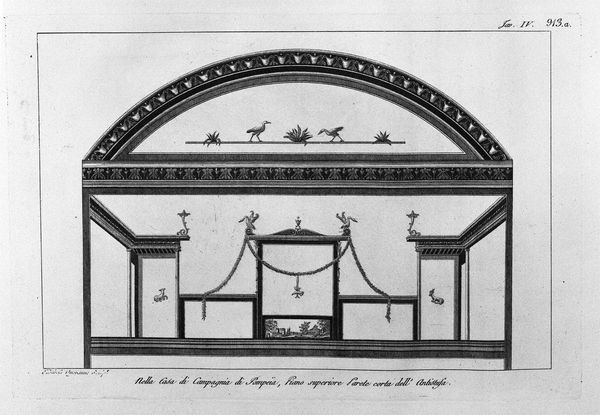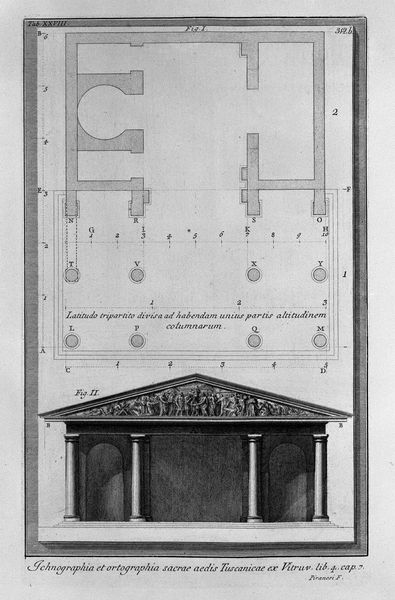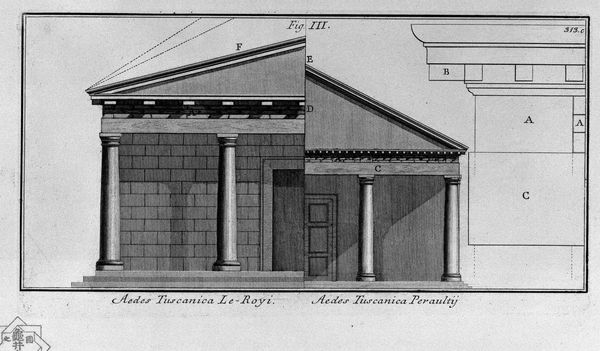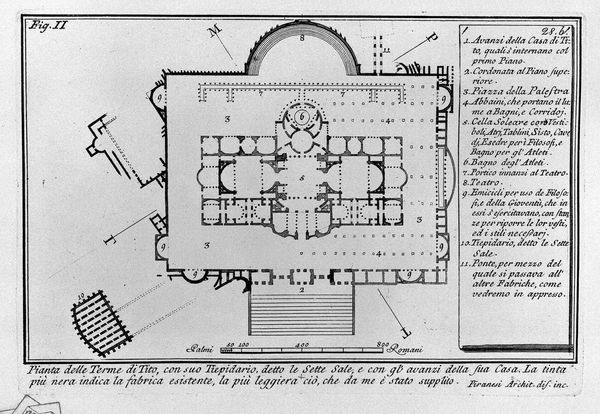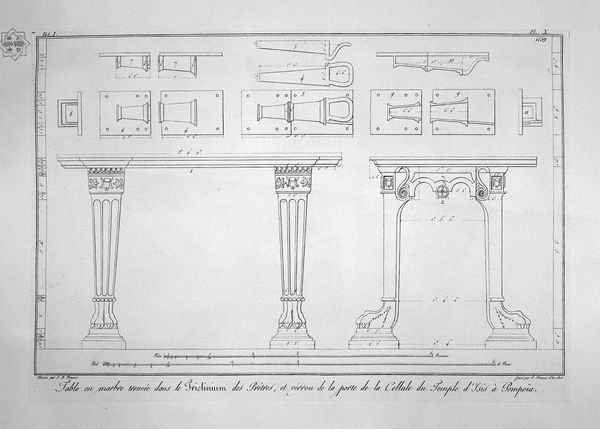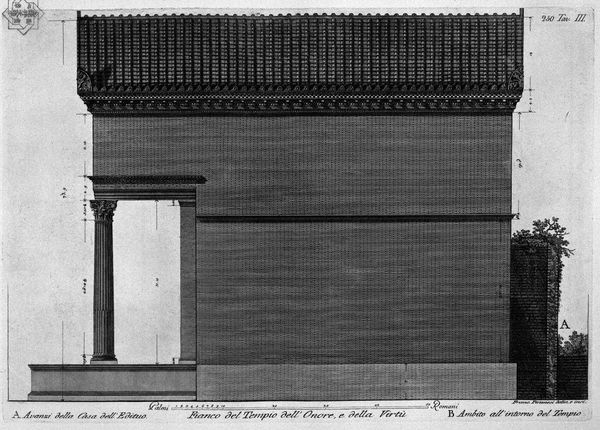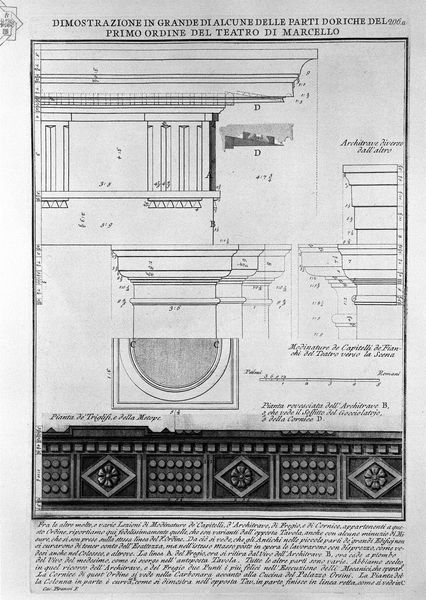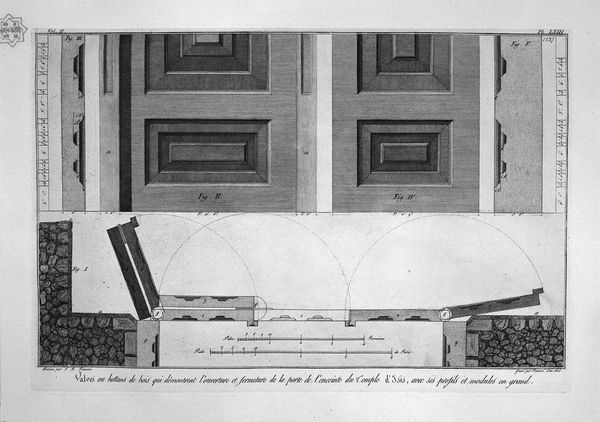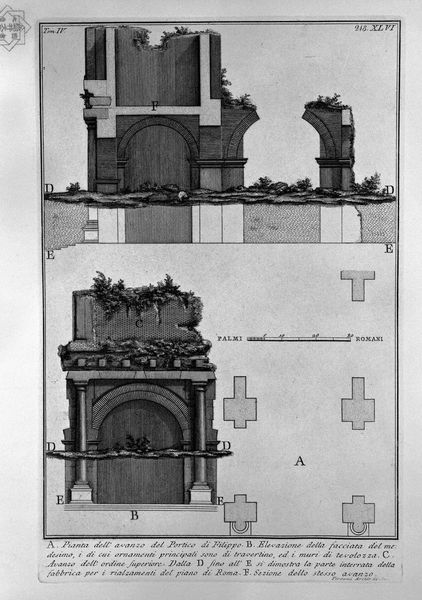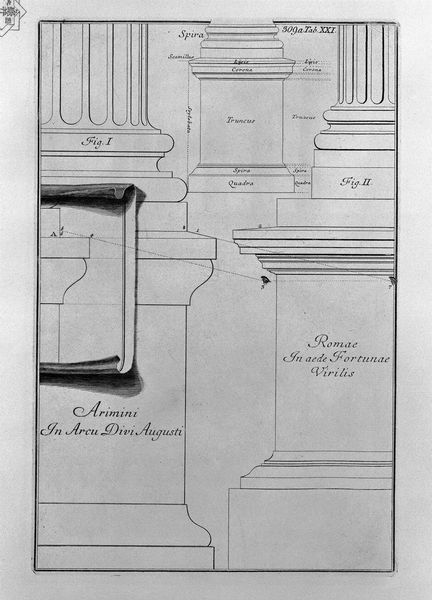
In the House of Pompeii, once downstairs half-barrel, ch`ha The impostatura for the two longer sides
0:00
0:00
drawing, ink, architecture
#
architectural sketch
#
drawing
#
architectural landscape
#
architectural plan
#
architectural design
#
architectural form
#
ink
#
architectural concept
#
geometric
#
ancient-mediterranean
#
architectural section drawing
#
architectural drawing
#
line
#
architecture drawing
#
architectural proposal
#
history-painting
#
architecture
Copyright: Public domain
Editor: Here we have Giovanni Battista Piranesi's ink drawing, "In the House of Pompeii, once downstairs half-barrel, ch`ha The impostatura for the two longer sides". It's like a blueprint, but far more artistic. What really stands out to me is how meticulously detailed it is. What catches your eye? Curator: It’s interesting how Piranesi, even in rendering architectural drawings, is very attuned to the symbolic vocabulary of antiquity. Note the meander patterns. The Greeks called it the "Key", used to represent the labyrinth—an underworld, the journey through life, wisdom… all resonant concepts that would have been immediately understood. Editor: Oh, that’s fascinating! So even this decorative element has deep meaning? Curator: Precisely! And observe the birds throughout, either depicted flying freely or perhaps entrapped between lattices or inside walled gardens. This creates an interesting duality and commentary. Are these spirits or souls longing for something beyond their confines? Are they contained within a domestic or cultural space? How does this relate to the inhabitants, do you think? Editor: Hmm… maybe it's a reflection of how even in a beautiful, structured environment, there's still a yearning for freedom, a connection to something untamed? Curator: An astute observation. Perhaps this image captures not just the physical space, but also the psychological space of those who inhabited it, with the symbols triggering emotional and philosophical considerations. Editor: So Piranesi wasn’t just documenting, but also interpreting and adding layers of meaning through these recurring images? Curator: Absolutely. He uses the architecture and these little symbols to build a whole story about the inhabitants of Pompeii. Editor: I hadn't considered how potent these repeated figures could be. Now I see more than just architectural features! Thanks for your perspective. Curator: My pleasure. It is through deciphering these layered symbols that we unlock the true essence of the artwork.
Comments
No comments
Be the first to comment and join the conversation on the ultimate creative platform.
